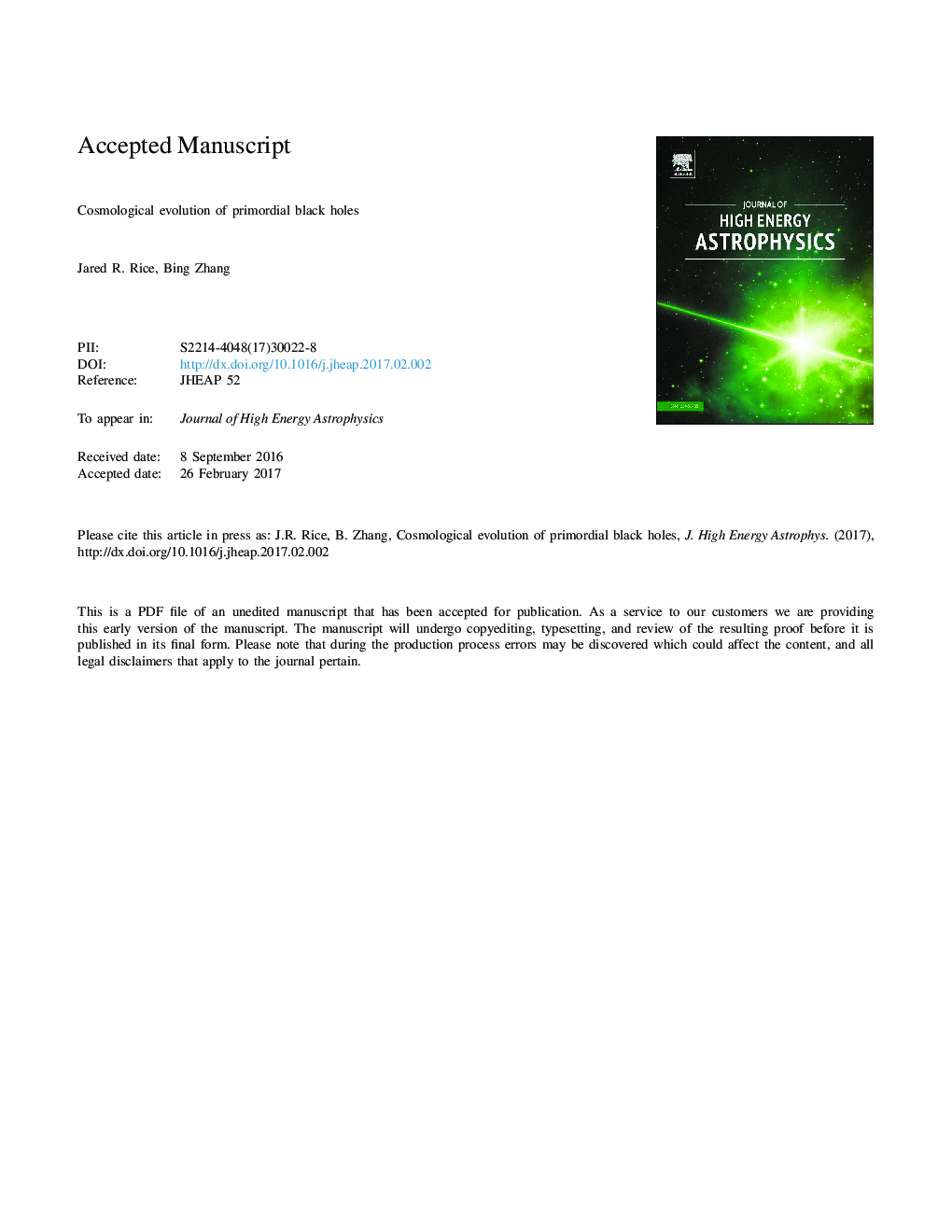| Article ID | Journal | Published Year | Pages | File Type |
|---|---|---|---|---|
| 5487702 | Journal of High Energy Astrophysics | 2017 | 34 Pages |
Abstract
The cosmological evolution of primordial black holes (PBHs) is considered. A comprehensive view of the accretion and evaporation histories of PBHs across the entire cosmic history is presented, with focus on the critical mass holes. The critical mass of a PBH for current era evaporation is Mcrâ¼5.1Ã1014 g. Across cosmic time such a black hole will not accrete radiation or matter in sufficient quantity to hasten the inevitable evaporation, if the black hole remains within an average volume of the universe. The accretion rate onto PBHs is most sensitive to the mass of the hole, the sound speed in the cosmological fluid, and the energy density of the accreted components. It is not easy for a PBH to accrete the average cosmological fluid to reach 30Mâ by zâ¼0.1, the approximate mass and redshift of the merging BHs that were the sources of the gravitational wave events GW150914 and GW151226. A PBH located in an overdense region can undergo enhanced accretion leading to the possibility of growing by many orders of magnitude across cosmic history. Thus, two merging PBHs are a plausible source for the observed gravitational wave events. However, it is difficult for isolated PBHs to grow to supermassive black holes (SMBHs) at high redshift with masses large enough to fit observational constraints.
Related Topics
Physical Sciences and Engineering
Physics and Astronomy
Astronomy and Astrophysics
Authors
Jared R. Rice, Bing Zhang,
